The International 2015: everything you need to know
A BEGINNER'S GUIDE TO THE CURRENT META
Dota 2 is a complicated game and that can make it tough to watch. Last year, I wrote a general guide to spectating Dota 2 as a newcomer that's still broadly relevant. Yet the Dota 2 metagame changes substantially every year, and the heroes, skills and strategies in play change with it. If you tuned into last year's International and felt like you got to grips with it then, you may find yourself having to start over for this tournament. This guide is intended to help with that.
If there was a title card for this year's International, it might look like this:

Dota 2 is currently in version 6.84c, and the metagame is pretty stable. It's very likely that we'll see a lot of the same picks and bans—particularly Gyrocopter and Leshrac, as visualised above—with relatively few surprises (although ask me next week if I want to take that particular prediction back.) That said, the heroes that are currently in vogue make for dynamic games on the whole—this isn't like last year, when the winning strategy actively made the game shorter and less fun to watch. If nothing else, having a relatively reliable set of top-tier picks makes the game easier to pick up for newcomers.
The key concepts
Pro games of Dota currently tend to be very aggressive, with lots of rotations—that's what it's called when a hero leaves their lane to try to make a play somewhere else. This is done in pursuit of map control, which is a really important concept to understand.
One way to think about is that 'map control' refers to the total amount of the map that a team can safely move across and farm. If a team destroys lots of towers or drafts heroes that specialise in suddenly picking off opponents, the effective area that is safe for that opponent to be in shrinks.
Most teams want to be able to achieve map control in the first 10-20 minutes with most of their players while at least one player—the carry—is farming gold for the lategame. Often, the results of early fights are only important insofar as they translate into map control, and therefore gold for the carry. For this reason, the scoreboard—which displays kills—can be a little bit misleading. Teams can be behind on kills but overall ahead if their key heroes are out-farming the enemy.
By tracking down and killing the enemy carry, placing vision wards, and seeking out other objectives, players and tip this equation in their favour. Usually, movement around the map will be related to one of these goals.
Keep up to date with the most important stories and the best deals, as picked by the PC Gamer team.
This isn't the only way to play or win, of course, and you'll see other strategies too—all-out pushes, drafts designed to end games early, and so on. As a beginner, however, the above is the most useful strategy to get to grips with.
The items
There are hundreds of items in Dota 2, and you'll hear commentators talk constantly about what a player might be about to buy and what it means for the game as whole. It'd be impossible to cover all of them, and honestly you probably don't need to know that much at this stage. Here, though, are four easy-to-remember items you should pay attention to.
Town portal scroll
This allows a character to teleport to a friendly building. It has a channeling time that can be interrupted by stuns, and is used to escape, return to lane, or just move around the map. Not having a town portal scroll—or having one on cooldown—can be a disaster if a player is caught in the wrong part of town.
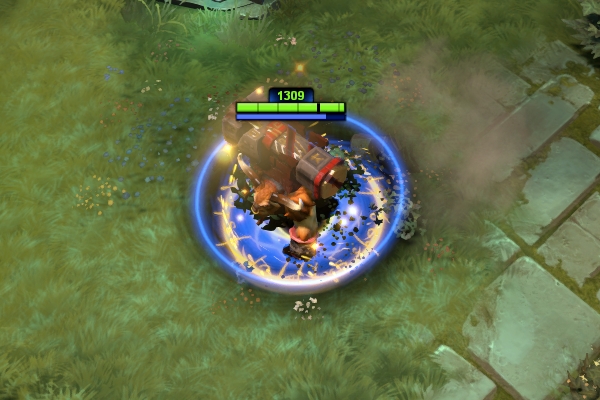
Bottle
Typically bought by midlaners, this grants the player three charges of health and mana regeneration. It can be refilled by returning to the fountain or by picking up one of the rune power-ups that spawns at the top and bottom of the river. It's very important for sustaining a midlaners presence in lane: if they drop low and their bottle is empty, they may find themselves in trouble.
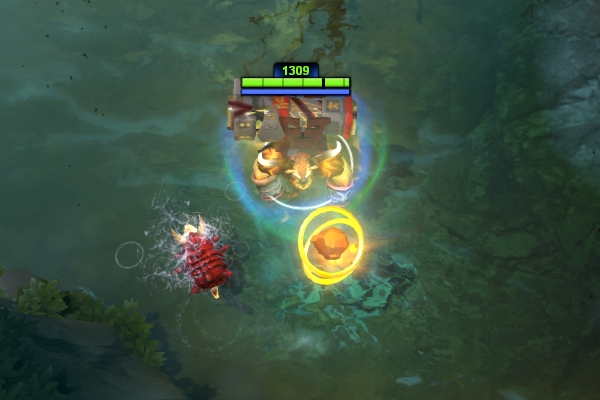
Blink Dagger
Blink Dagger gives heroes the ability to instantly teleport short distances, which is a major boost to mobility. It's often bought on initiators—characters that specialise in starting fights by diving into the centre of the enemy and letting off their ultimate. Often when a character like Earthshaker or Axe gets a Blink Dagger they'll be careful to reveal it at a key time—once they know that an opponent is capable of blinking, teams tend to be much more cautious.
Black King Bar ('BKB')
Black King Bar makes heroes invulnerable to magic damage and crowd-control effects for a limited period of time. This allows big damage-dealers like carries to get a lot done in teamfights without the threat of being stunned, silenced, or turned into a pig. A character with an active BKB glows gold and gets a bit taller—you can't miss them.
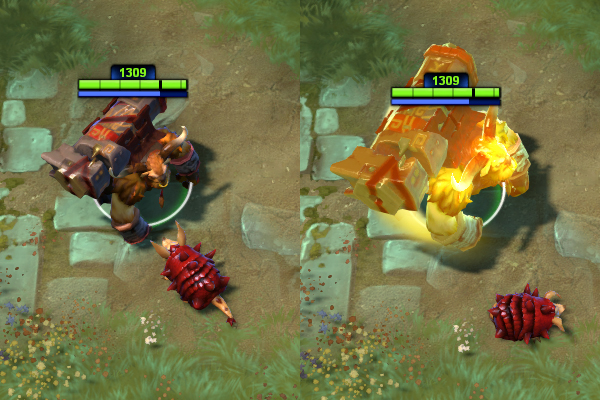
The heroes and skills
You'll see many more heroes in play than the dozen or so below, but understanding these and their key abilities will help a lot while spectating this year's games.
Gyrocopter
Gyrocopter is an incredibly popular carry because he farms well, makes good use of items, and is dangerous early—and therefore both a boon to his team and tough to shut down. Key abilities to look out for are Rocket Barrage and Call Down. Rocket Barrage deals high damage over time to the heroes nearest Gyrocopter, and you'll either see it as a salvo of rockets or lasers depending on cosmetics. Call Down is Gyrocopter's ultimate, a massive AoE missile strike that does damage, slows, and is often deployed at the beginning of a teamfight.
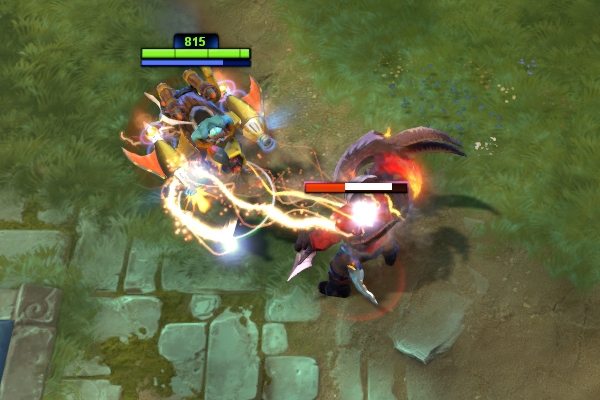
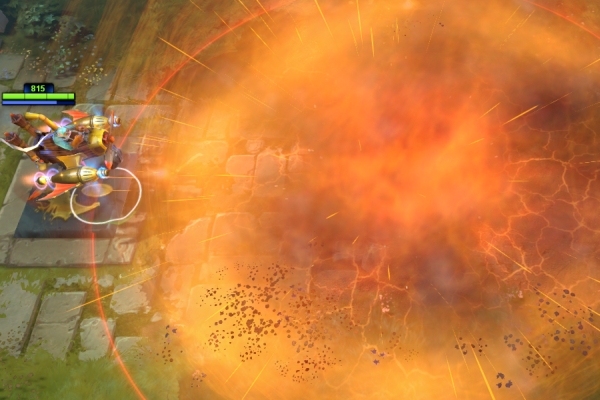
Leshrac
Leshrac is arguably the most overpowered hero in Dota 2 at the moment, so you'll see him banned—a lot. He's so powerful because he's hard to lane against, he has a stun, a nuke, and a slow, he can demolish towers quickly with AoE magic and, later in the game, he becomes incredibly difficult to kill. All of his spells are strong, but the one most likely to be missed by newcomers is Pulse Nova, his ultimate. This causes Leshrac to glow and deal heavy damage in an area around him—look for the telltale disco lights.

Queen of Pain
Queen of Pain is a popular midlaner and sometimes played as a carry or offlaner. She can blink naturally, giving her high mobility, and offers AoE burst damage in a few different flavours. The most impactful of these is her ultimate, Sonic Wave. This is a cone-shaped attack that deals pure damage—without going into the details, this means that it can't be countered by magic resistance items or Black King Bar.
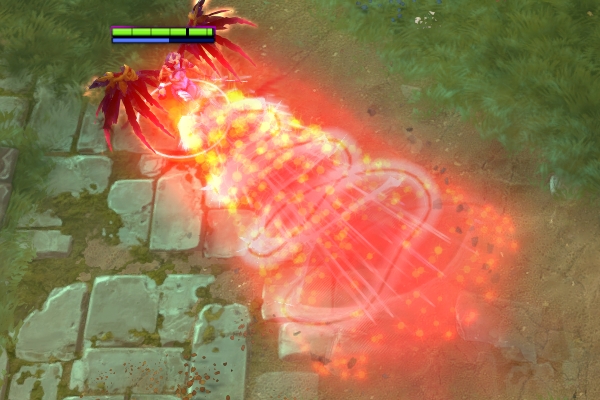
Tusk
Tusk is played offlane and sometimes support. He's useful because of the amount of utility and control he offers, as well as significant burst damage if he gets far enough ahead. Key spells to look out for are Ice Shards, which is a projectile that forms an impassable barrier where it strikes, and Snowball. The latter is the most complex. Tusk targets an enemy and rolls up into a ball, but doesn't start moving right away. Then, the player may bring other allies into the snowball to increase its speed and size. All players inside the snowball are completely protected from anything happening outside, giving the ability the power to save people as well as initiate fights.
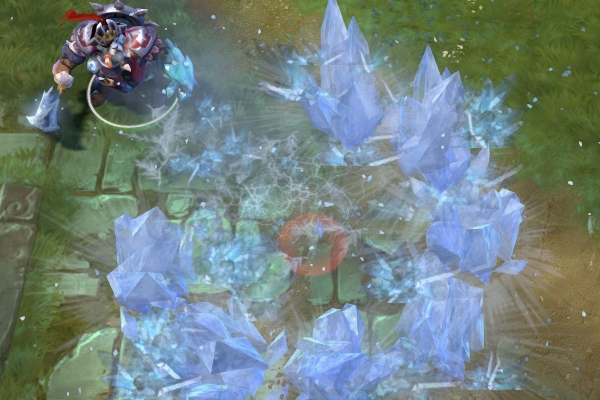

Dazzle
Dazzle's a powerful support who can sustain his teammates for a long time. He has a unique ability, Shallow Grave, which manifests as a column of pink light around Dazzle or an ally. While affected by Shallow Grave, a hero can lose health but can't die. While there are edge cases where Shallow Grave can be negated, for the most part it's a very powerful way to keep a carry in the fight. If you see a low-health hero survive for ages in a bath of pink light, Dazzle has happened.

Lina
A mobile spellcaster with huge lane presence and phenomenal single-target magic damage. Lina is popular because she tends to win her lane and can dominate heroes that are vulnerable to burst damage. In addition to a nuke and stun, it's worth looking out for her ultimate—Laguna Blade. This is a massive lightning bolt that does a huge amount of damage at high mana cost. When and where Lina deploys Laguna Blade in a fight tells you a bunch about the player's priorities.

Earthshaker
Earthshaker is a support who offers a lot of control early on and who, later in the game, can single-handedly turn teamfights. Fissure is a long linear stun that creates an impassable wall for a few seconds. Even if a character isn't affected by the stun, in the vast majority of cases the wall itself is still an obstacle—Earthshaker is great when he can trap an enemy in dangerous territory. His ultimate, Echoslam, is a point-blank AoE nuke that 'echoes' off any enemy it hits. For this reason, it's best when used against the largest possible group—creeps and all. A good Earthshaker waits until his opponent is grouped up and then—boom.
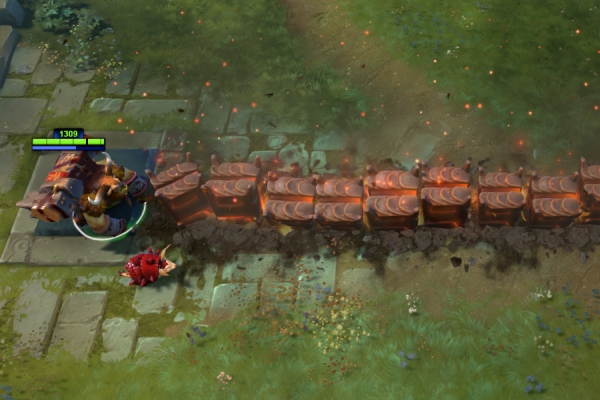
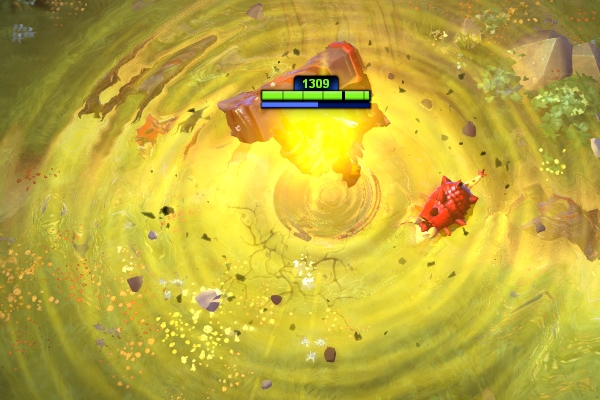
Bounty Hunter
Bounty Hunter is nowadays most often run as a highly mobile support that specialises in scouting, harassing across the map and attempting to assassinate the enemy's courier as it delivers a key item. Able to go invisible from level 1, Bounty Hunter's most important ability is his ultimate, Track. Placing Track on an opponent allows Bounty Hunter's team to see them wherever they go—even if they turn invisible—and if a Tracked opponent dies then the gold reward is higher. Over time, lots of Track kills add up to a significant gold advantage.
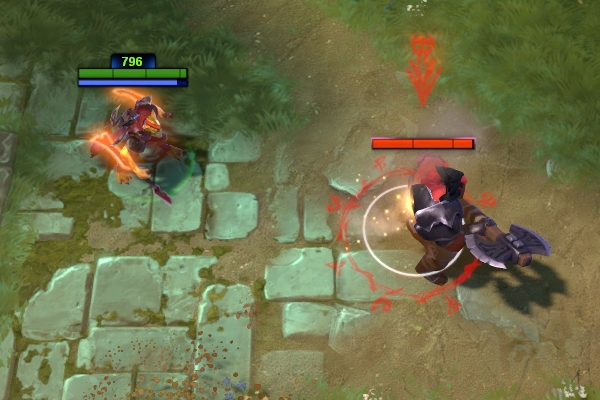
Bloodseeker
Bloodseeker is highly lethal with powerful potential to heal himself and the best teamfight cleanup ability in the game. He gets faster and more aggressive as enemies get low on health, and can even see through invisibility if the enemy in question is wounded enough. His kills return a lot of health to Bloodseeker if he's played right. Blood Rite creates a massive sigil in blood on the ground which detonates after a few seconds, silencing and damaging enemies caught in the vicinity. Rupture is his ultimate, placing a debuff on enemies that causes them to rapidly lose health if they move.
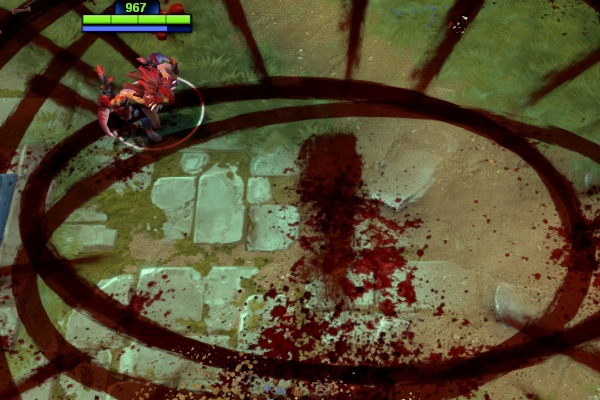

Undying
Undying is popular for his incredible presence in lane—he's among the very few offlaners who can take on three other heroes solo and, in the right circumstances, win. This is in part because of the way that he steals the strength stat of his opponents—which dictates health pool, among other things—and adds it to his own. His most disruptive spell, however, is Tombstone. This creates a mausoleum that steadily spawns zombies at the feet of enemies. Zombie hits cause a slow and as the target loses health the zombies become more aggressive. They mount up over time and quickly become overwhelming, but destroying the Tombstone itself immediately kills all active zombies.
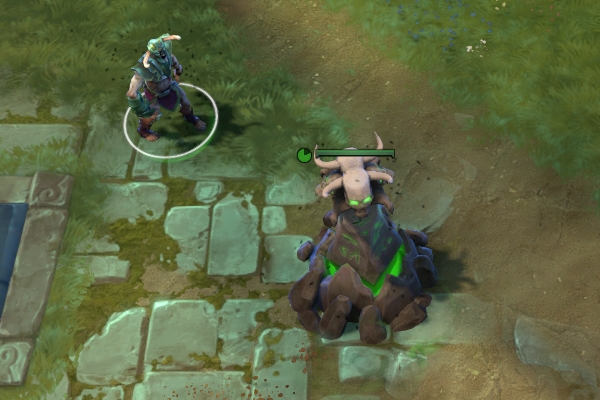
Winter Wyvern
Winter Wyvern is the most recent support to be added to Dota 2, and is considered a hard counter to drafts that rely on physical damage (powerful regular attacks, rather than spells, for the most part.) Cold Embrace is a big part of that. It's a heal that roots the target to the ground while they receive health over time. During this period the target can't do anything, but is also completely immune to physical damage—but vulnerable to magic. Winter Wyvern's ultimate, Winter's Curse, completely disables a single target for several seconds and creates a cursed field around them. Any enemy who enters this field is forced to stop what they're doing and attack their ally. Used right, this can cause the whole enemy team to 'et tu, Brute?' one of their own before the fight has even started.
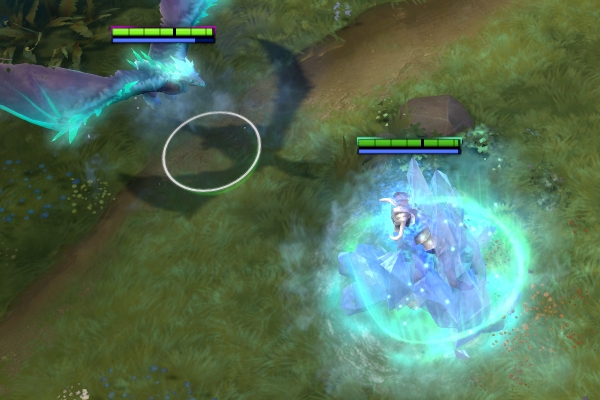
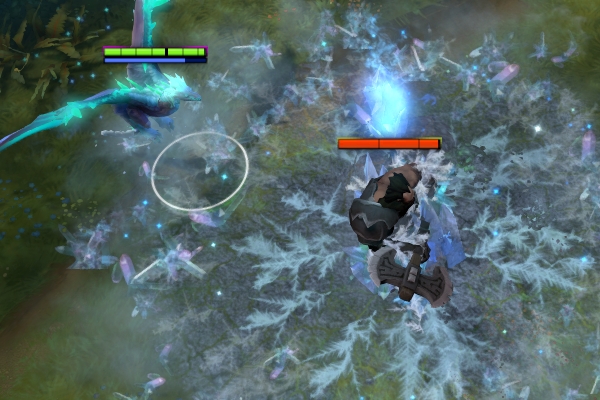
Naga Siren
Sometimes played as a carry, other times as a support, the most important of Naga Siren's abilities to understand is her ultimate—Song of the Siren. This creates a huge area around Naga Siren—expressed as subtle blue wavy lines—that puts enemies to sleep and prevents them from taking damage. It lasts a while, but can be cancelled early by Naga Siren (or resisted with BKB). Song of the Siren is sometimes used to escape, but most often used to reset a team's position in the middle of a fight—it's possible to put the entire enemy team to sleep, get everyone into a better spot, and then start the fight over from this advantageous position.
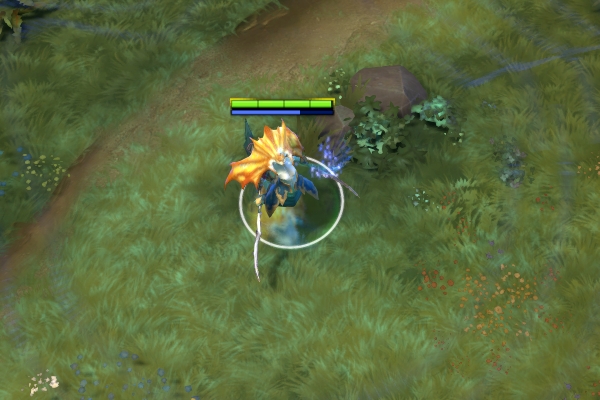
Techies
Techies are... well, they're Techies. Techies are three goblins pushing a minecart full of bombs, and they behave like no other Dota hero. While weak in and of themselves, they plant mines around the map that can annihilate whole groups at once. Bringing Techies into a match can force a long game by slowing down pushes, and places huge pressure on enemy supports by requiring them to buy sentry wards to detect the bombs. In addition to traditional proximity-detonating Land Mines, there are also Remote Mines and Stasis Mines. The former can be detonated whenever Techies likes, and the latter stuns. Finally, Techies' Suicide Squad, Attack! ability allows them to sacrifice themselves in a huge explosion.
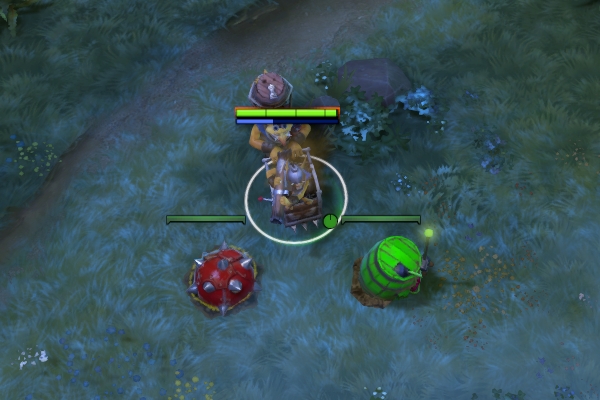
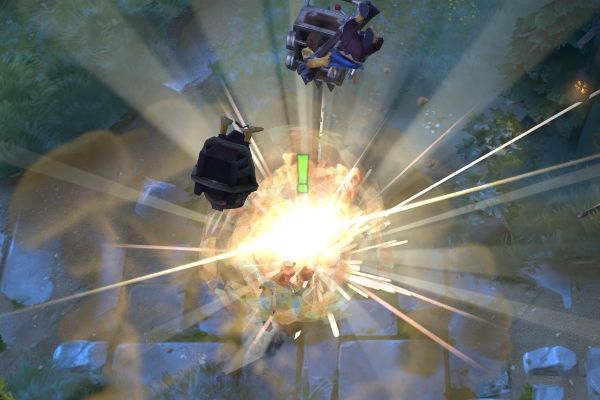
Phew! That's it for now. Check back on Monday the 3rd of August for the first part of PCG's daily International coverage
Joining in 2011, Chris made his start with PC Gamer turning beautiful trees into magazines, first as a writer and later as deputy editor. Once PCG's reluctant MMO champion , his discovery of Dota 2 in 2012 led him to much darker, stranger places. In 2015, Chris became the editor of PC Gamer Pro, overseeing our online coverage of competitive gaming and esports. He left in 2017, and can be now found making games and recording the Crate & Crowbar podcast.


